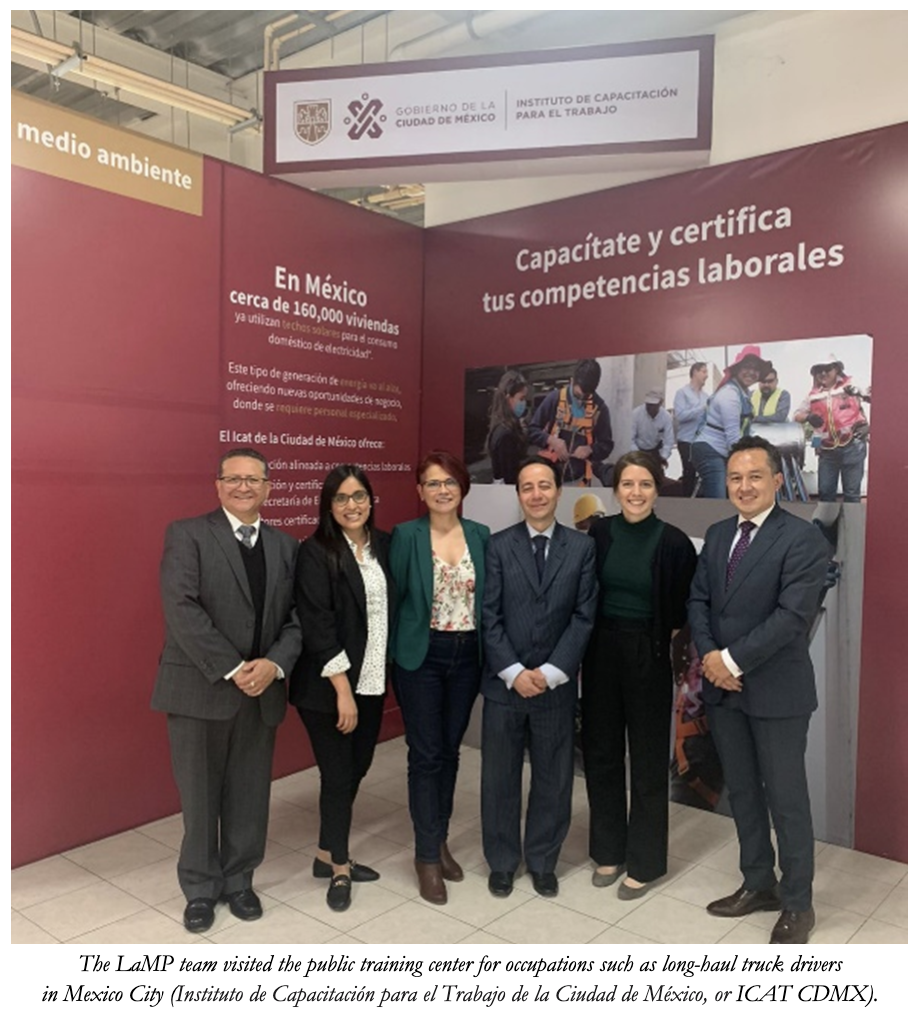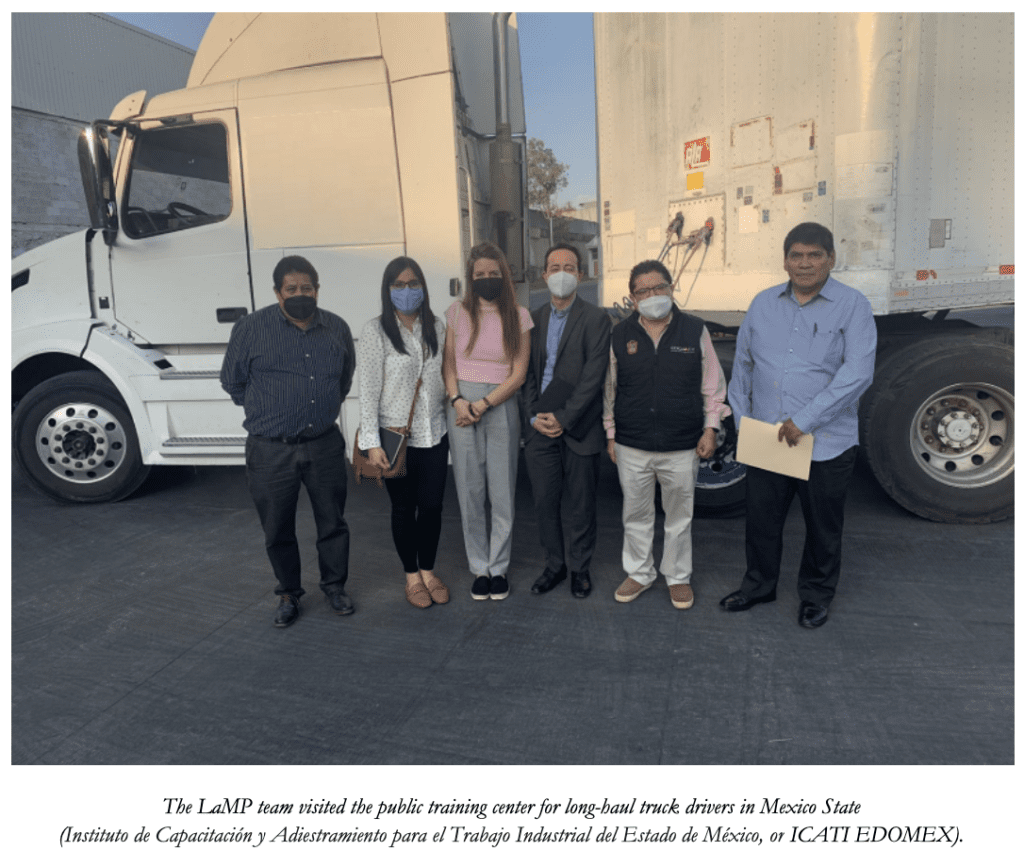FAVORITE QUOTES:
“I want to become a driver because I want a better future for my family”
“I want to become a driver because it has the privilege of combining responsibility with sunsets and unimaginable landscapes”
– Students at training centers
MAIN TAKEAWAY:
Labor mobility can help address the current labor shortage in the Mexico’s trucking industry, particularly for heavy freight transportation. Coordinated and scalable efforts to professionalize the country’s long-haul truck drivers may be one of the first steps towards such endeavor. The industry demonstrates several important ingredients necessary to build a bigger and stronger labor-force, such as organizational capacity, motivated and talented leaders and teams, well-developed processes and procedures, willingness to invest from the private sector, and competitive salaries. However, underlying conditions such as crime and insecurity, supply chain industry configuration, informal practices, insufficient control and monitoring and health concerns present important challenges as the industry works to attract new workers.

LaMP TEAM REFLECTION:
After trips to Guatemala and the Dominican Republic, the LaMP team traveled to another target destination of our Ibero-America scoping project – Mexico. This trip allowed us to assess Mexico’s potential and appetite for circular labor mobility within its heavy freight transportation industry. Our focus on Mexico stems from its position of representing both – a receiving country of workers from Guatemala, El Salvador and Honduras, also known as the Northern Triangle, as well as a sending country of trained workers to the United States and Canada, which face similar labor shortages in the sector.
The LaMP team met with a broad variety of stakeholders including government actors at different administrative levels, private sector, and labor organizations, collecting various perspectives and getting familiar with the existing initiatives. Although many of them shared experience with Mexican truck drivers eventually leaving to work for US employers and expressed concerns about this issue, just a few stakeholders have considered binational coordinated circular labor mobility schemes as a solution helping to meet labor demand of employers in both countries. Still, most stakeholders agree that more cross-border collaboration, such as joint efforts with the United States to align incentives for the two nations’ employers, is necessary to address the workforce gap. And yet, while most of the stakeholders we encountered during this trip expressed positive attitudes towards foreign workers, they have been more focused on attracting and training Mexican workers, including young people and women, as a first straightforward response to the industry’s needs.
The workforce gap for the long-haul freight transportation sector is a complex challenge, but the industry is highly motivated to address the issue. The LaMP team will build on this energy to explore possible labor mobility solutions tailored to the sector’s needs. We are currently assessing the feasibility of different labor mobility initiatives, including financing mechanisms, to unlock current barriers to job training, and cross-border coalition building. Specifically, we are analyzing Central America’s long-haul transportation workforce needs and starting to explore bilateral or multilateral collaboration opportunities in the US side.
Interested in this work? Feel free to contact us!
Stay tuned for more details about this project as well as other LaMP’s work by signing up for our newsletter and following us on twitter!

